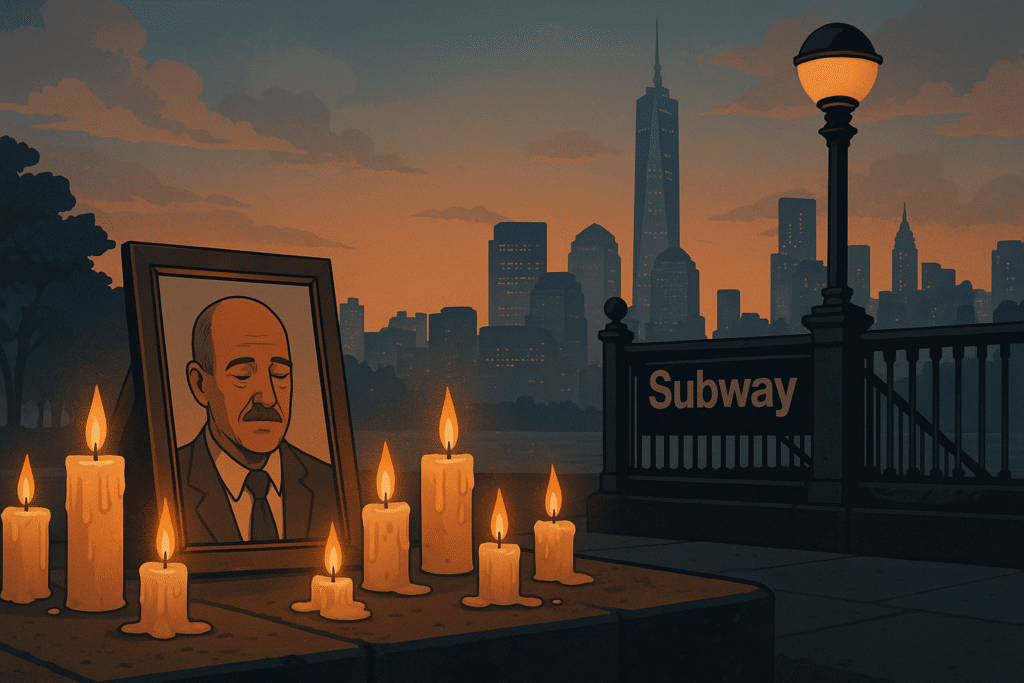The community of Bensonhurst, Brooklyn, came together this weekend to lay to rest Nicola Tanzi, a 64-year-old Italian immigrant whose violent death in a subway assault at Jay Street–MetroTech Station has reignited public concern over safety in New York’s transit system.
A City in Mourning
Mourners filled a small church in Bensonhurst on Saturday, where family and friends remembered Tanzi as a hardworking grandfather, a devoted family man, and a beloved member of the Italian-American community. Floral tributes surrounded his casket as the choir sang quietly — a stark contrast to the senseless violence that claimed his life.
“He left for work that morning like any other day,” said one family friend. “He never came home. That’s the hardest part — the randomness.”
Tanzi was attacked on October 7 while exiting the Jay Street–MetroTech Station in Downtown Brooklyn. Witnesses said the assailant struck without provocation, causing Tanzi to fall and sustain fatal injuries. The suspect, whose identity has not been officially released, was quickly apprehended and is reported to have had five prior open criminal cases, including assault and theft.
Renewed Focus on Transit Safety
The incident has fueled renewed debate about random violence in New York’s subway system — an issue that has persisted despite multiple safety campaigns and increased police patrols.
In response, NYPD Transit Chief Michael Kemper reaffirmed the department’s commitment to public safety, citing intensified patrols and surveillance across key stations.
“This was a tragic and preventable act,” he said. “Our priority is to make sure New Yorkers feel safe taking the train — at any hour.”
The Metropolitan Transportation Authority (MTA) echoed the sentiment, noting that while overall crime rates remain lower than pre-pandemic levels, high-profile violent incidents have continued to erode public confidence in the subway system.
Calls for Accountability
City officials and community advocates have called for stronger measures against repeat offenders, arguing that the justice system’s handling of habitual violent criminals has failed to protect the public.
“We can’t allow individuals with multiple open cases to roam freely,” said Councilmember Inna Vernikov, who represents parts of South Brooklyn. “Accountability and mental-health support must go hand in hand.”
Transit unions and rider advocacy groups also urged the city to invest more in mental-health crisis intervention and station security improvements, such as better lighting, emergency call points, and visible police presence.
A Community Searching for Closure
In Bensonhurst, grief is mixed with frustration. Residents say Tanzi’s death has deepened fears among elderly commuters and working-class families who rely on public transportation daily.
“We want justice for Nicola, but we also want safety for everyone else,” said a neighbor outside the church. “No one should be afraid to take the subway.”
As Tanzi’s family prepares for a quiet burial in Brooklyn’s historic Green-Wood Cemetery, the city confronts a familiar question: how to balance compassion and accountability in a system strained by inequality, mental-health crises, and public fear.
For now, Nicola Tanzi’s name joins a growing list of victims whose loss has reignited an urgent conversation about safety, reform, and the right to move freely in New York City without fear.



